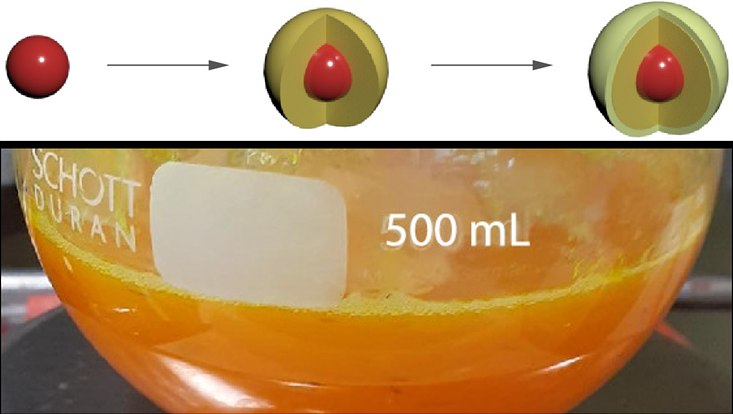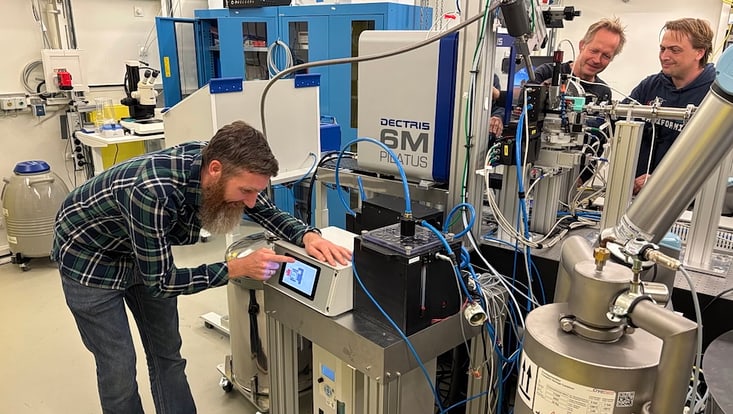Imaging of Matter
Seamless shift from red to blue: new light sources based on quantum dots
26 July 2022

Photo: Hannes Van Avermaet
Semiconductor nanocrystals, quantum dots are outstanding luminescent materials. An international research team led by Prof. Zeger Hens of Ghent University and Dr. Holger Lange of Universität Hamburg has developed an approach to increase the quantum yield, which is important for the light output.
A key characteristic of the photoluminescence of quantum dots is the fraction of emitted photons per excitation, the photoluminescence quantum yield. Low quantum yields result in the conversion of entered energy into heat instead of light. One way to increase quantum yield is to overgrow an emitting quantum dot with a protective shell of another material, an established approach for the well-studied cadmium-based structures. However, commercial use of cadmium is restricted because the material is toxic.
Tension can lead to defects
As an alternative, researchers developed quantum dots based on indium phosphide (InP). "The problem here is that the materials used to form the core and shell have different lattice constants, resulting in strained interfaces between the core and shell," explains Holger Lange, who also conducts research in the Cluster of Excellence "CUI: Advanced Imaging of Matter." This tension can lead to the formation of defects which decrease the quantum yield.
In an earlier work, the groups of Zeger Hens and Holger Lange were already able to show that an alloyed shell can be tuned to achieve a stress-free environment (Chem. Mater. 2018, 30, 4393). Now the researchers picked up on this idea for the optimization of large-scale InP quantum dot syntheses, which they report in the journal ACS Nano. First, the protocol for the cores was optimized for robustness and scalability. Then, the protocol for the shell growth was optimized to minimize strain according to Raman spectroscopy investigations.
New approach enables high quantum yields
"This approach proved to be more useful than direct optimization of quantum yield," Lange says. The obtained protocol yields high quantum yield materials across the full emission spectrum within a one-pot reaction mixture. When reducing the InP core dimensions for emission tuning, a gradual admixing of sulfur to form an alloyed intermediate shell helps to minimize strain-induced line broadening.
Through this approach, the researchers can seamlessly shift the emission line from red to cyan/blue while preserving the high quantum yields. Lange says, "We expect the availability of such full-spectrum InP-based quantum dots to greatly advance the development of quantum-dot-based light sources."
Citation
Hannes Van Avermaet, Pieter Schiettecatte, Sandra Hinz, Luca Giordano, Fabio Ferrari, Céline Nayral, Fabien Delpech, Janina Maultzsch, Holger Lange, and Zeger Hens
“Full-Spectrum InP-Based Quantum Dots with Near-Unity Photoluminescence Quantum Efficiency”
ACS Nano 2022, 16, 6, 9701–9712


